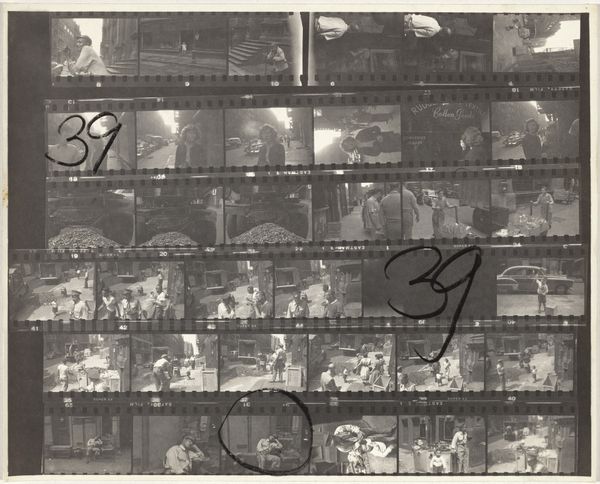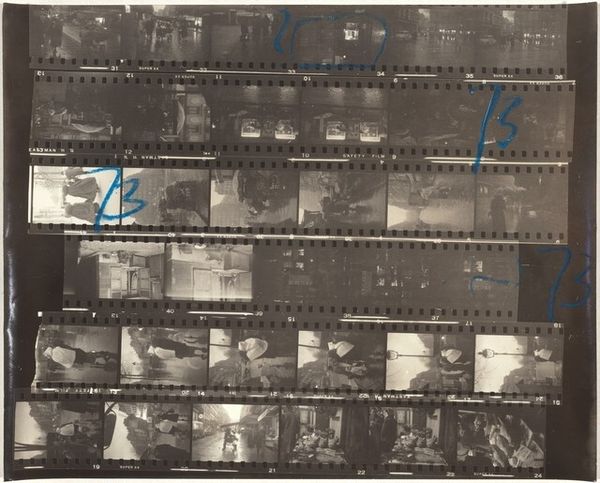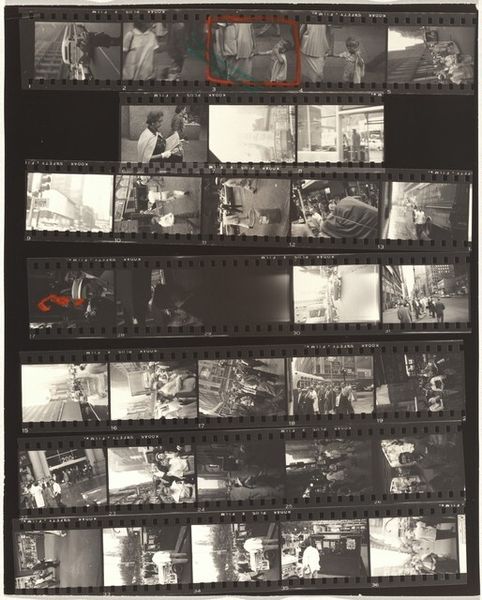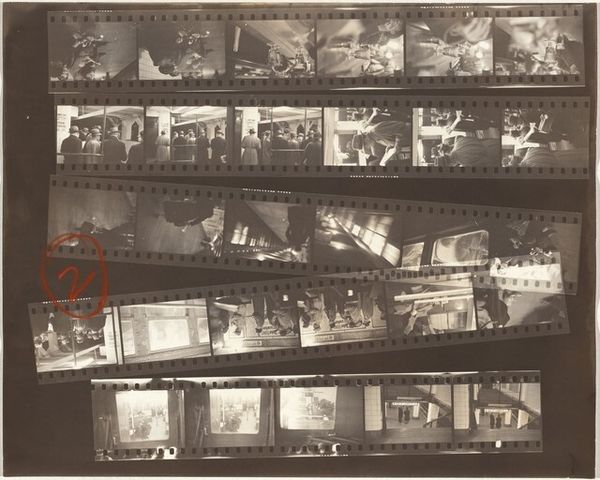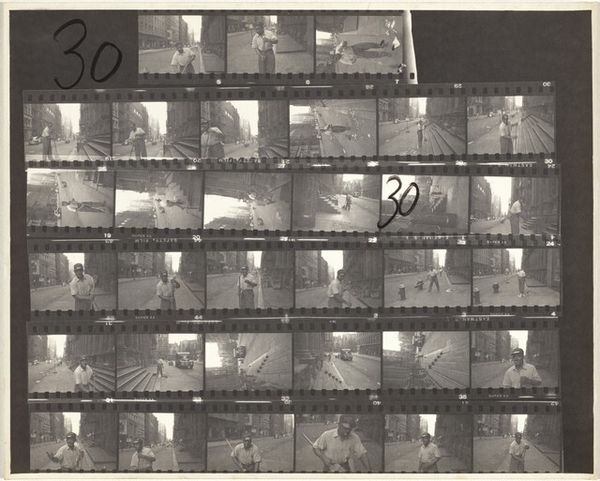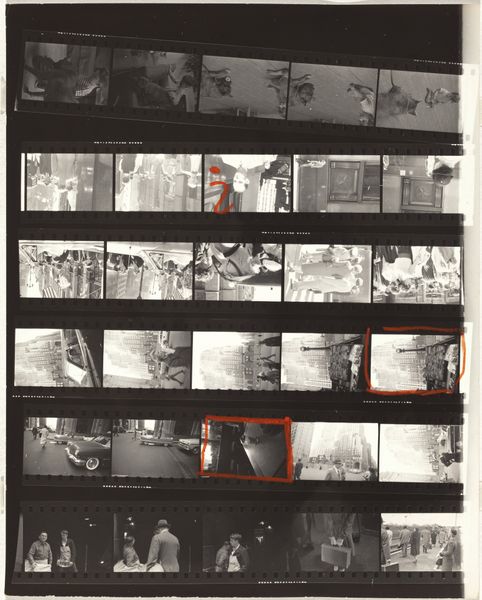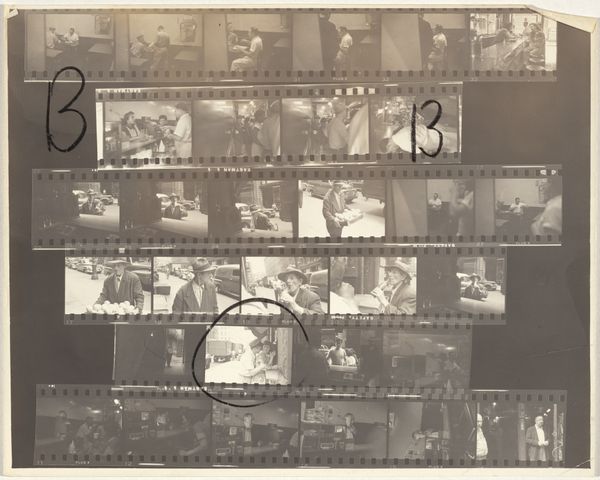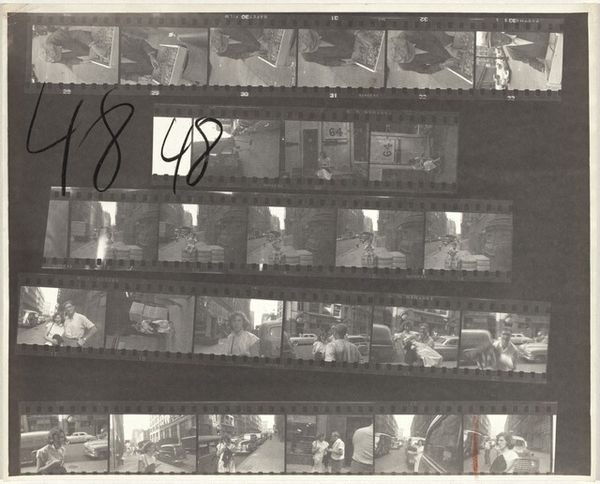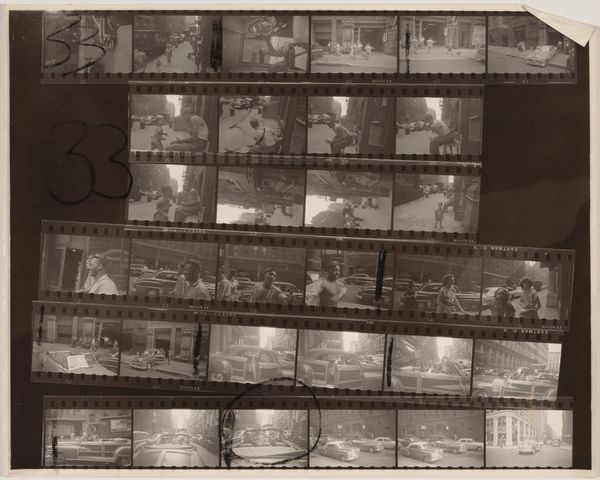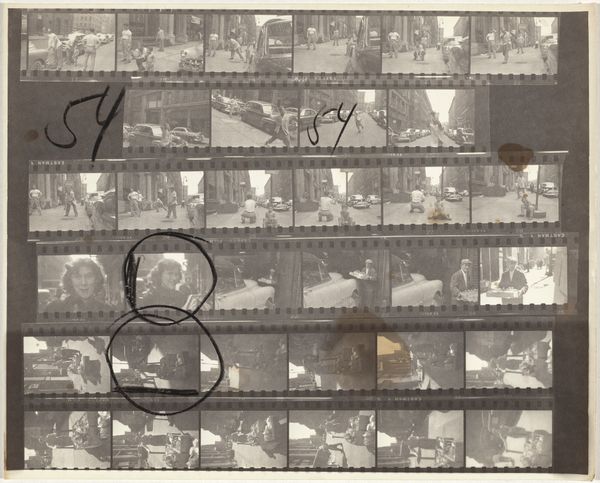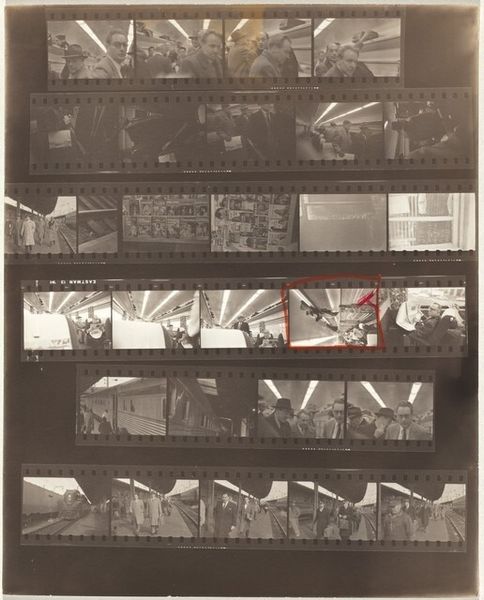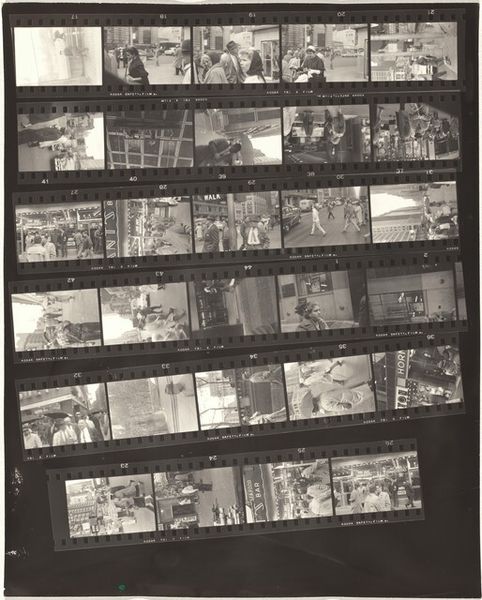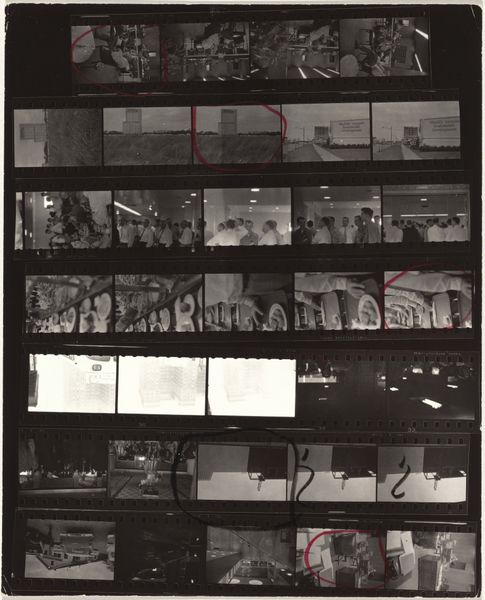
Dimensions: overall: 20.3 x 25.2 cm (8 x 9 15/16 in.)
Copyright: National Gallery of Art: CC0 1.0
Curator: Immediately, I’m struck by the raw, almost journalistic feel of this piece. The stark blacks and whites… It's disquieting. Editor: This is Robert Frank’s "11th Street story 34," a gelatin silver print made in 1951. Frank, of course, is renowned for his photographic chronicles of American life. What intrigues me is this very contact sheet; here he presents his labor, and the various, and evolving captures of the city. Curator: Yes, this moves it beyond simply a photo and into a meditation on process, right? He's presenting the means of production, leaving visible the artist’s selections, his darkroom practice, all part of that materiality, breaking with high art pretenses and inviting discourse on image production and reproduction. Editor: Indeed, but within this snapshot of process is a powerful formal arrangement. Note the dark linearity framing bright, carefully selected images; there's a push and pull, like light struggling against shadow, both visually and conceptually. Curator: That shadow is literally the apparatus through which light must hit to yield image, though, so I don’t see this binary opposition, precisely. But that the content seems… common. An urban sidewalk vendor. The composition here isn’t attempting to hide those structures. The marks are the artist is leaving become another product for market, as well, yes? Editor: Well, let’s consider that this vendor motif reappears again and again on this gelatin silver print; this, in turn, creates rhythm. It makes these particular frames resonate. This arrangement imbues even the everyday with symbolic weight. What else might those repeated arrangements suggest, beyond a simple record of street vending? Curator: The repetition highlights the commodification of daily labor. Street vending as part of city infrastructure is what is produced. So, it becomes, at base, an impressionistic rendering of the working class trying to get by… this photograph doesn’t seem about a single moment or event, but about this system of labor? It’s quite intentional that he does not efface the means through which we view those impressions, too. Editor: Precisely. By acknowledging the context of making—materials and process—we’re offered more nuanced readings; beyond that immediate darkness and light, the subject is open, and the reading complicated.
Comments
No comments
Be the first to comment and join the conversation on the ultimate creative platform.
